The Influence of Ocarina Music in Zelda Games
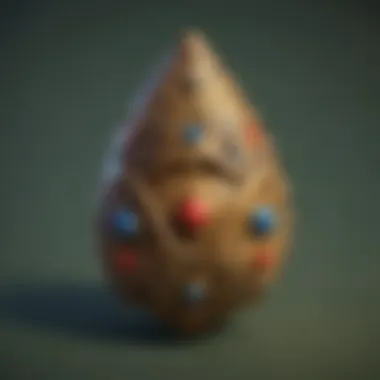
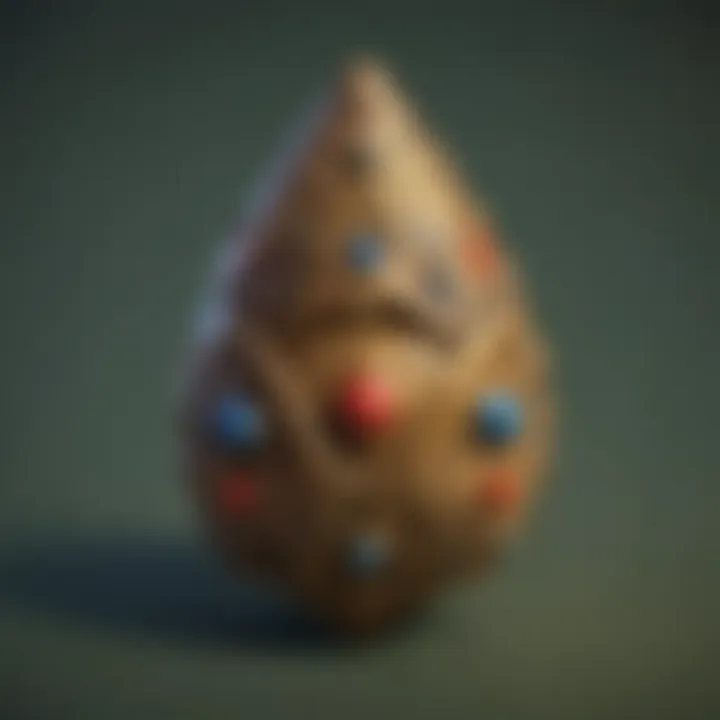
Intro
The Zelda series is not just a collection of video games; it represents a rich tapestry of storytelling, adventure, and yes, music. Among the various instruments introduced, the ocarina holds a special place, echoing through the realms of Hyrule and blending seamlessly with the quests and lore. In examining the ocarina music, we uncover its multifaceted influence, from engaging gameplay mechanics to the emotional depths that enhance the overall narrative experience. This article will take you on a journey, revealing how these captivating melodies intertwine with character development, mythos, and even providing practical insights into gameplay. Through this exploration, enthusiasts can gain a broader understanding of the unique role ocarina music plays within this beloved franchise.
Game Reviews
Gameplay Features and Mechanics
The ocarina offers a dynamic layer to gameplay in the Zelda series, primarily showcased in titles such as "The Legend of Zelda: Ocarina of Time." Here, players are tasked with mastering various melodies to solve puzzles, navigate the environment, and even initiate battles. Each note played has potential game-changing effects, turning the ocarina into an essential tool rather than just a means of entertainment. The intuitive mechanic encourages players to think creatively; trial and error with melodies can lead to magical rewards, such as opening doors or summoning rain to heal the land.
Storyline and Quests
At the heart of the ocarina’s magic lies its deep connection to the narrative. In Ocarina of Time, for example, melodies not only serve as gameplay elements but also as narrative devices. Significant quests intertwine with the melodies, creating memorable moments that resonate emotionally with players. The Song of Time and its ability to manipulate time reflects the core themes of the game—growth, loss, and the fluidity of existence. Such intertwining of music and story forms a rich foundation for player engagement.
"Music in the Zelda series isn't just a backdrop; it breathes life into the narrative, making the player feel integral to Hyrule's fate."
Visuals and Sound Design
The visual aesthetics of the Zelda titles often rise to create a mesmerizing landscape that harmonizes with the sounds of the ocarina. The colorful environments, designed with great attention to detail, are enhanced by the whimsical and diverse tunes generated by the ocarina. Each region in the game features distinct melodies, effectively crafting an auditory palette that enhances the game world. Players can often associate specific tracks with particular places and events, forging lasting memories that complement the visual experience.
Comparison with Previous Titles
Reflecting on earlier titles, the ocarina’s introduction marked a shift in how music could be integrated into video games. Previous installments relied more heavily on background themes, while the ocarina took center stage as an interactive element. Its legacy can now be seen in later titles within the series, where music continues to play a vital role in gameplay and narrative immersion. Each new delivery still acknowledges the roots laid down by the ocarina, inspiring newer players and satisfying seasoned fans.
Character Analyses
Popular Characters Overview
Characters like Link and Princess Zelda embody the essence of the franchise. Their stories are intricately woven with the melodies of the ocarina, showcasing emotional growth and challenges faced during their journeys. These iconic figures can often be connected to specific tunes, reinforcing their identities and resonances with fans.
Character Development and Backstories
The role of music extends beyond superficial elements. For example, Link’s adoption of the ocarina reflects his growth from a simple boy to the hero of time. The ocarina offers not just melodies but channels for expressing emotions ranging from joy to sorrow. The soundscapes created by Link undoubtedly shape the narratives they inhabit, fostering more profound connections with players.
Role in the Zelda Universe
Music garners respect in the Zelda universe, where every character seems to have an affinity for melodies. Whether it’s the wise owl K owlin sharing insights or the mischievous Skull Kid creating chaos with his magical play, characters reflect the significance of sound in their decisions and journeys.
Fan Theories and Speculations
Fans often speculate about the hidden meanings behind the ocarina’s tunes and their connection to broader themes within the franchise. Musicians within the game, such as the Saria, have been the subject of much discussion on platforms like Reddit, where players share insights and theories on how songs of the past shape the future of Hyrule.
Lore Discussions
Mythology and Worldbuilding
The ocarina not only plays a role in gameplay but also serves as a bridge to Hyrule’s mythology. Each melody can often trace its roots to real-world folklore, establishing a historical tie between the game and cultural themes. This blend encourages players to explore the lore deeply, piecing together the stories behind the notes.
Legendary Items and Artifacts
The ocarina, of course, is not merely a musical instrument; it is one of several legendary items that shape the destinies within Hyrule. Its place among iconic artifacts like the Master Sword speaks to its significance as a tool not solely for battle but for understanding and navigating the fabric of the game’s reality.
Link to Real-world Mythologies
In fostering connections between in-game music and real-world mythologies, players expand their understanding of cultural significance. The use of the ocarina can be compared to traditional wind instruments found in various cultures, enriching the player's appreciation of their role in storytelling.
Timeline Placement and Theories
There’s much debate surrounding the timeline of the Zelda series and how the ocarina ties into this complex narrative framework. Players often engage in discussions about the events that might occur during specific ocarina melodies, contemplating how music weaves through the timeline and connects disparate titles into a cohesive experience.
Gameplay Strategies
Combat Techniques and Tips
Incorporating the ocarina into combat can see a player shift the tide of a battle. Certain melodies may stun foes or provide buffs that enhance combat effectiveness, making it essential for players to remember different tunes for various situations. The rhythm of battle often reflects the rhythm of music, illustrating a dynamic connection between the two.
Puzzle Solutions and Walkthroughs
The ocarina also plays a vital role in solving puzzles. Players can often find that specific melodies unlock clues or even alter the environment. Guides often detail these strategies, advising players on which songs are needed for particular dilemmas. Access to resources like reddit.com unleashes tips and tricks that can greatly enhance the gaming experience.
Collectibles and Side Quest Guides
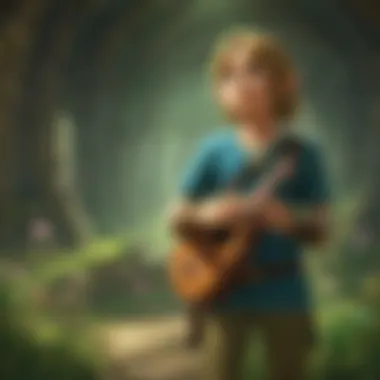
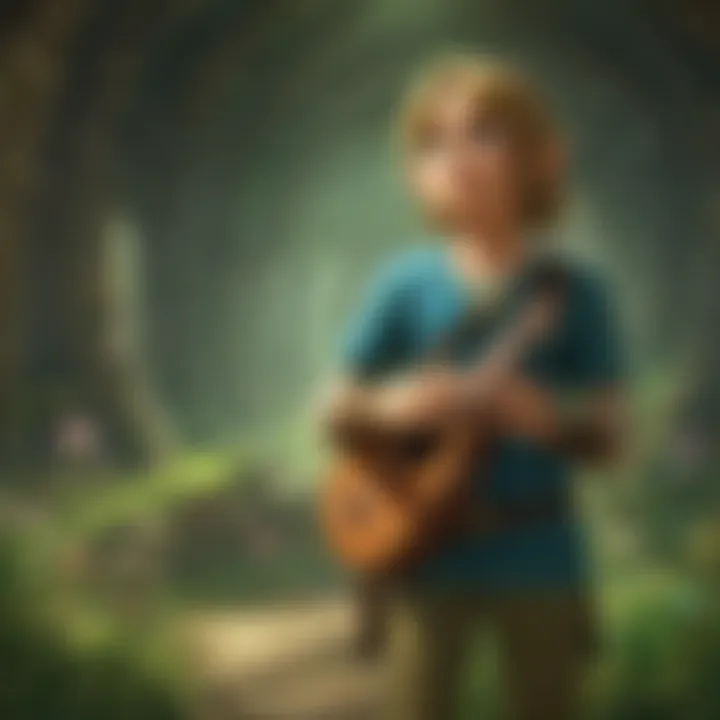
Melodies often serve as keys to unlocking side quests and treasures. Collectibles tied to ocarina music contribute to the richness of exploration, as players venture off the main path to discover hidden areas. Guides that integrate these elements ensure collectors don’t miss out on engaging side stories.
Boss Battles Tactics and Strategies
At critical moments, utilizing the ocarina can turn the tides during boss battles. Knowing which songs apply to different stages could mean the difference between victory or defeat. Players often find themselves sharing strategies, linking back to the importance of music in their approach to challenges faced in various titles throughout the series.
Through our exploration, it’s clear that the ocarina serves not just as an item but as a lens through which we can view the entirety of the Zelda series. The intersection of music, lore, and gameplay is an intricate tapestry, adding layers of meaning to a beloved franchise. Every note played becomes part of an epic adventure, resonating long after the console is turned off.
Preamble to Ocarina Music
Ocarina music is not just a backdrop to gameplay in the Zelda series; it serves as a vital thread weaving together the story, characters, and overall allure of the franchise. At its core, the very essence of this music evokes emotion, pushing players deeper into the experience while connecting them to the game's intricate storytelling. A simple melody played on an ocarina can invoke nostalgia and anticipation, often echoing through the minds of players long after their gaming session ends. In this section, we shall explore the definition and origin of ocarina music, along with its broader role in the gaming realm.
Definition and Origin
An ocarina is a small wind instrument, typically made from clay or ceramic, resembling a teardrop or an egg. The concept of blowing air into the ocarina and covering holes to alter the pitch resonates with players as they learn to manipulate sound, turning what initially appears complicated into something tangible and immediate. Ocarinas have a rich history, tracing their roots back thousands of years, originating in ancient civilizations across the globe, including the Andean cultures of South America and various regions of Asia. This deep-seated history adds layers of significance, as players engage with melodies that echo the sounds of ages past. It’s fascinating to see how the ocarina found its way into modern culture through video games, particularly the iconic The Legend of Zelda: Ocarina of Time, and how it has carved out a niche for itself in the hearts of fans around the world.
The Role of Music in Gaming
Music sets the rhythm for gameplay, acting as both a guide and a mood setter. In an era when video games are exploring advanced storytelling and character development, the role of sound—through music, effects, and ambiance—has only gained in significance. Ocarina music in Zelda is central to the player's journey. Each note played can unlock secrets, progress the story, or solve puzzles. Think about how the joyous notes of Zelda's Lullaby encourage players to feel a sense of reassurance amidst challenging quests.
When players pick up an ocarina in the game, it isn't merely a tool for strategy; it transforms into an emotional beacon, echoing the souls of characters and the weight of their narrative. The immersive quality of ocarina music enriches the gameplay experience, often resulting in memorable moments that leave a lasting impact well beyond the final credits.
"In gaming, as in life, music is the silent companion that drives our emotions while we journey through the narratives presented before us. It shapes our understanding and guides our decisions."
Thus, as we delve deeper into the world of ocarina music in the Zelda series, we uncover how its melodies serve not just as entertainment or background noise but as crucial components of both gameplay and emotional engagement in this beloved franchise.
Historical Context of the Ocarina
The ocarina, often associated with its striking melodic capabilities, has a significant history that adds weight to its presence in The Legend of Zelda series. Understanding the historical context of the ocarina is crucial, as it not only shapes our appreciation for the instrument itself but also deepens our grasp of how music enhances storytelling and emotional engagement in video games. In this section, we’ll draw attention to the evolution of the ocarina and its cultural significance, establishing a richer framework for examining its role in Zelda.
Evolution of the Ocarina
The ocarina, as we recognize it today, hasn’t always looked or sounded the same. Originating from ancient times, this wind instrument can trace its lineage back thousands of years, with roots in various cultures across the globe. Crafted from materials like clay, wood, or bone, the earliest versions of these instruments were simple, often resembling a rounded, hollowed shape.
As centuries rolled on, the design of the ocarina evolved dramatically. Different cultures began to refine and innovate on the original design. For instance, the Italian ocarina of the 19th century brought about the invention of the "sweet potato" ocarina, adopting a more sophisticated look and sound production technique. With a more standardized tuning, this variant gained popularity and has influenced the styles observed in contemporary ocarinas.
Additionally, ocarinas have appeared in various forms in the musical traditions of China, Mesoamerica, and sub-Saharan Africa, illustrating how this instrument serves as a universal medium of expression.
This evolution is not just about shape but also about sound and meaning. Over time, the ocarina came to symbolize many things—from spirituality to emotional storytelling, a thread that connects beautifully to its role in the Zelda series.
Cultural Significance in Ancient Societies
Historically, the ocarina isn’t just an instrument; it is steeped in cultural significance. In ancient societies, it played a pivotal role in rituals, celebrations, and storytelling. For instance, in Mesoamerican civilizations, ocarinas were often utilized in ceremonies to connect with the divine. The sweet sounds that flowed from these instruments were believed to carry prayers and messages to the gods, illustrating their power beyond a mere musical tool.
Similarly, in Chinese culture, ocarinas, known as “xiao”, were used for meditation and reflection, embodying a connection between harmonies of the natural world and the inner self.
These cultural intimacies find echoes in The Legend of Zelda, where ocarina music creates a profound atmospheric experience for players. Link’s use of the ocarina transcends mere gameplay; it resonates with the historical richness of music as a powerful storytelling medium.
In summary, the evolution and cultural significance of the ocarina not only enrich our understanding of this instrument but also heighten its exceptional role within the Zelda franchise. As we delve deeper into the art of ocarina music in the subsequent sections, the historical context will serve as a sturdy foundation illustrating why this instrument resonates so harmoniously with the game's themes and narratives.
Ocarina in The Legend of Zelda Series
The Ocarina stands as a monumental element within the Zelda series, serving not just as a musical instrument but also as a crucial narrative device. Its introduction adds layers of depth to gameplay and enriches player engagement, becoming a symbol of Link's journey across the fantastical lands of Hyrule. The ocarina, through its enchanting melodies, transforms ordinary game moments into unforgettable experiences.
Prelims of the Ocarina in Ocarina of Time
The ocarina made its grand debut in The Legend of Zelda: Ocarina of Time, released in 1998. In this initial outing, it acts as a rite of passage for the protagonist, Link. This instrument connects Link to the land, playing a critical role in his quests and interactions.
As players progress, they are not merely spectators; they are active participants in creating the soundtrack of Hyrule. Through the ocarina, users unlock various abilities and progress in the game. The introduction presents us with the concept of playing music for more than just pleasure—it's about engaging with the very fabric of the game world itself. Each note played isn’t just a key—it’s a door to new adventures, revelations, and emotional experiences, tying Link's fate closely with the music he conjures.
Musical Mechanics in Gameplay
Unlocking Secrets
A standout aspect of the Ocarina of Time gameplay is its ability to unlock secrets. Specific melodies let players discover hidden treasures, unveil shortcuts, or summon allies in their travels. This mechanics has a charm to it: one moment, you’re wandering in the dense forest, and with the right tune, you find a concealed chest filled with rupees, providing both an unexpected thrill and a sense of accomplishment.
The unique feature of unlocking secrets through music encourages players to experiment. As gamers try out different combinations, it creates a sense of joy and curiosity. This method of engaging with the game makes it popular among players, as they often find themselves revisiting areas to unearth secrets they might have missed on their initial playthrough. However, one might argue this could lead to moments of frustration if the melodies are not easily remembered. Still, mastering the ocarina becomes part of the challenge and fun.
Solving Puzzles
Alongside unlocking secrets, the ocarina is crucial in solving various puzzles that challenge players throughout their adventure. Its melodies often serve as clues that integrate seamlessly into the game world. Players must listen closely, analyzing the environment’s feedback to determine which song corresponds to which challenge.
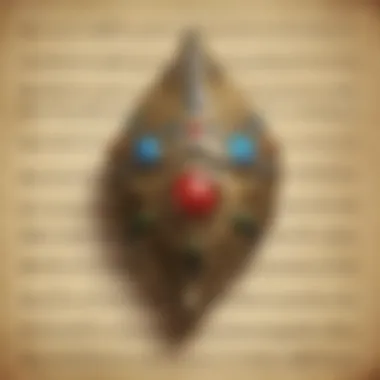
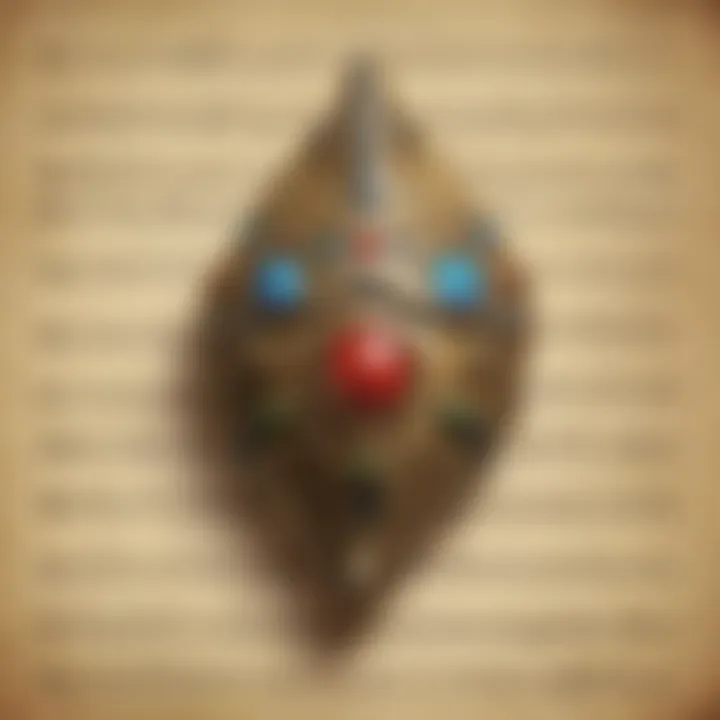
This feature not only tests the players' abilities to decode the hints embedded in the music but also enhances their connection to the narrative. When players successfully solve a puzzle using the ocarina, it fosters an extraordinary bond with the game world. However, some puzzles might pose a challenge, leading to moments of trial and error, which can either frustrate or endear players further to the experience. In either case, the ocarina elements remain indispensable to the gameplay, ensuring that music and interaction flow like a beautifully composed piece.
"The ocarina has become more than just an instrument; it's a vessel for storytelling, memory, and adventure within The Legend of Zelda series."
In summary, the ocarina’s role in the Zelda series is irrefutably transformative. It not only enriches the storytelling but also deepens player experience through gameplay mechanics that harmonize music and adventure.
The Emotional Resonance of Ocarina Music
Ocarina music plays a pivotal role in the Zelda series, resonating deeply with players through its emotive melodies and intricate weave into the game's narrative. This section aims to explore how this music creates atmosphere and engages the emotions of players, enhancing their connection to the story and characters. The ocarina, as an instrument, is not just a gameplay feature but a channel for emotional expression, allowing players to navigate the highs and lows of their adventure with greater depth.
Creating Atmosphere
Environmental Soundscapes
The environmental soundscapes crafted by ocarina music are integral to world-building in the Zelda series. Each area in the games—from the serene forests to the dark dungeons—is brought to life through these melodies. The soft notes of an ocarina serenade the player, inviting them into lush environments where they can almost feel the breeze brushing against their cheek.
A key characteristic of these soundscapes is their ability to mirror the backdrop of each setting. For instance, the haunting melodies played in the shadows of Hyrule Field serve to evoke feelings of unease and anticipation. This makes Environmental Soundscapes more than mere background noise; they become essential to the player's emotional journey.
The unique feature of these soundscapes is how they seamlessly combine musical themes with environmental cues. Each location's ocarina piece resonates with its atmosphere, giving players a sense of belonging. This synthesis can lead to a heightened immersive experience, although some may find the lack of variety across multiple playthroughs limiting. Overall, the contribution of Environmental Soundscapes cannot be overstated as they set the mood for exploration and discovery.
Cues for Emotional Engagement
Cues for emotional engagement are another fundamental aspect of ocarina music. As players traverse through the game, melodies serve as auditory signals that heighten emotional responses. For example, the first time Link plays "Zelda's Lullaby" imbues a feeling of nostalgia and warmth, drawing players closer to the narrative thread connecting Link to Princess Zelda.
One characteristic of these melodies is their ability to prompt specific emotions at critical moments—when the player uses the ocarina during pivotal encounters, the music often swells, pulling players into the emotional core of the story. As players face dilemmas or confrontations, these cues can amplify tension or release, guiding feelings with precision.
A unique feature of these emotional cues lies in their functionality. In some scenes, a sudden change in melody can signal a shift in the plot or character dynamics, having the power to evoke sorrow, joy, or even fright. The unpredictability can leave players on edge, although it may also be disorienting for some. Yet, the overall advantage of these emotional cues is they foster deeper connections with the storyline, making them a powerful component of Zelda’s emotive framework.
Character Development Through Melodies
The melodies not only establish an atmosphere but also play a crucial role in character development. Important themes associated with characters—such as Link’s determined spirit, Zelda’s grace, or Ganon’s menace—are intricately linked to specific compositions. This musical characterization helps players understand who these characters are, beyond mere words or actions.
As players hear these signature tunes during key moments, they absorb the characters' journeys and motivations at a deeper level. When Link plays the "Song of Time" at significant junctures, it resonates with his quest, reinforcing his growth from a boy to a hero. The music helps to narrate his story as much as the visuals or dialogue do.
Iconic Melodies and Their Themes
The melodies that emerge throughout the Zelda series do much more than serve as background music; they shape players' emotional landscapes and enhance their gaming experience. Each tune not only captures a moment but also embodies the essence of gameplay, character development, and storytelling. These iconic pieces have become synonymous with the series, resonating with fans long after they’ve put down the controller. Understanding these melodies is essential as they deepen our engagement and connection to the game’s world.
Zelda's Lullaby
One of the most recognizable tunes is Zelda's Lullaby, a composition that evokes feelings of nostalgia and solace. Its gentle, soothing notes often accompany scenes that depict Princess Zelda's moment as a guiding light to Link, the player’s avatar. In-game, this melody aids in creating a sense of peace amidst the chaos of battles. Therefore, Zelda's Lullaby is pivotal not just as a gameplay mechanic but also as a thematic anchor for the narrative.
Moreover, this lullaby reinforces the player’s attachment to the character of Zelda. When Link plays it, it provides momentary respite from conflict, subtly reminding players of their connection to both the princess and the overarching quest for harmony within Hyrule. This tune's repetitive and calming nature also has the advantage of being easily memorable, making it accessible for players of all ages.
Song of Time
Then you’ve got the Song of Time, which encapsulates the essence of time travel intricately present in The Legend of Zelda: Ocarina of Time. When players use this melody, they face broader cosmic themes, as not only does it unlock pathways within the game, but it also carries the weight of history across timelines. This song isn't merely background noise; it propels the storyline and connects Link with his past and future selves.
The ability to manipulate time opens a world of possibilities and puzzles that require critical thinking and strategy. As a result, Song of Time stands out as a melody that transforms gameplay into a more profound experience, blending mechanics with philosophy. Moreover, its structure—characterized by a slightly melancholic undertone—echoes players' emotions as they traverse the trials of Zelda’s universe.
Others Worth Noting
Saria's Song
Saria’s Song is another charming melody that mirrors the vibrancy of friendship and growth. When Link first plays this tune in the Kokiri Forest, it signifies the bonds he shares with not just Saria but also the other Kokiri children. This track is lively and playful, contrasting sharply with the more somber tones of melodies focused on tragic themes.
The unique feature of Saria’s Song is its ability to spark joy and laughter, transporting players into a simpler time. It conjures messages of innocence and companionship, which are essential pillars of Link's journey. By engaging with this cheerful tune, players can reminisce about their own friendships, providing a personal flair to the gameplay experience.
Requiem of Spirit
On the other end of the spectrum, Requiem of Spirit carries a dark, yet powerful presence. This haunting piece serves to transport Link into the Spirit Temple and is an emblem of the mystery surrounding the afterlife and its guardians. The melody's ponderous notes evoke feelings of reverence and depth, enhancing the narrative's exploration of life and death.
Its key characteristic is its unique rhythm and haunting articulation, which encapsulates the essence of the temple’s mysterious atmosphere. While some might find its somber tone challenging, the music is undeniably a beneficial component to the setting. The Requiem of Spirit enhances the immersive experience, beckoning players to delve into the themes of sacrifice and preservation embedded in the storyline.
"Music can give a soul to the universe, wings to the mind, flight to the imagination, and life to everything."
Overall, these melodies together create a rich tapestry of auditory experiences, forming a vital part of the Zelda saga. By investing in the emotional undertones of each composition, players encounter a deeper appreciation of not just the tunes themselves, but also their role in transforming the game into a resonant piece of narrative art.
Interactivity and Player Experience
In the realm of gaming, interactivity is the golden thread that weaves the player's journey through the narrative and mechanics of a game. When it comes to The Legend of Zelda series, especially through the ocarina music, this intertwining creates experiences that are both engaging and memorable. The ability to learn and play music enhances not just gameplay but also fosters an emotional connection that reverberates with players long after they set down the controller.

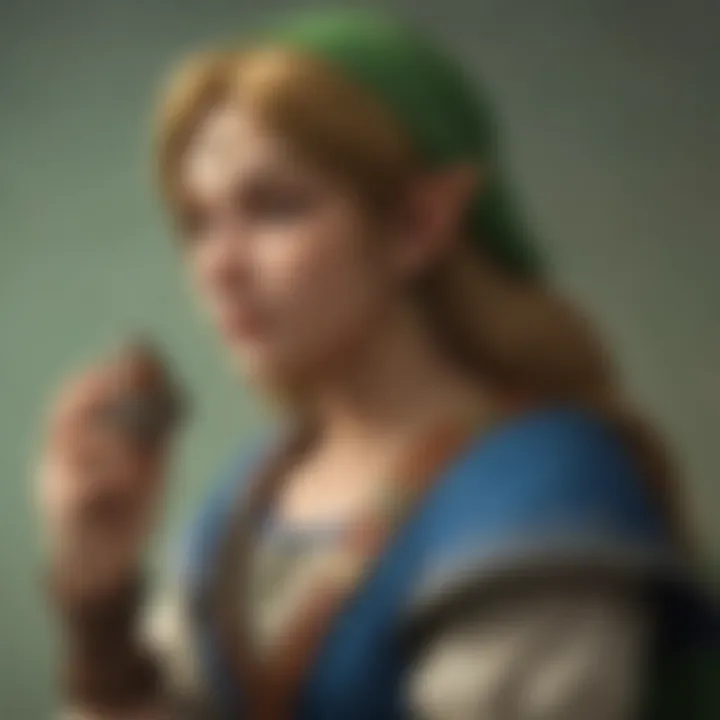
Learning and Playing the Ocarina
Learning to play the ocarina in Ocarina of Time is not just a chore; it's an invitation to become part of the game's fabric. The ocarina is treated almost like a character itself. Each note, each melody, is a key to unlocking different facets of the game, whether it's changing the time of day or summoning friendly creatures. Players are gradually introduced to the melodies, allowing them to master simple tunes before attempting more complex ones. This mechanic creates layers of satisfaction, as you first fumble through the notes, only to later transition into more assured playing.
This process of learning mirrors real-life music education, where one experiences the joy of progression. It's not merely about hitting the right buttons; it's about the feeling of accomplishment as players become attuned with the musical language of Hyrule. The melodies stick with players; some may even find themselves picking up real-life ocarinas post-game, inspired by their virtual journeys.
Impact on Player Engagement
The engagement players find through the ocarina is multi-faceted and deeply enriching.
Memorable Moments
In gaming, memorable moments often linger in our minds, shaping how we reflect upon our polyphonic adventures. The ocarina music contributes significantly in this regard. When players perform Zelda's Lullaby to soothe a restless spirit or play Song of Time to manipulate the game's flow, these actions forge unforgettable memories. The key characteristic of these moments lies in their duality; they can be playful yet serious, serving as thematic anchors in the narrative. As a result, these memorable instances are a crucial reason why ocarina music stands out in the Zelda series.
What makes these moments so potent in the article? It's the unique feature of combining the act of playing with pivotal story developments that resonates well with both gameplay and narrative. The challenge of memorizing melodies, coupled with their immediate emotional impact, solidifies these experiences into the player's mind, creating a lasting imprint.
Personal Connections
Beyond mere mechanics, the ocarina facilitates a more personal relationship between the player and their journey. The act of learning songs and using them at strategic moments creates a sense of ownership over the experience. As players engage with ocarina melodies, they often find themselves drawn into the game world on a deeper level. This key characteristic of personal connections is what makes these interactions a hallmark of player engagement.
The unique feature of these personal connections is their capacity to evoke nostalgia. Players frequently reflect upon their experiences fondly, recalling not just the notes they played, but the emotions they felt in those moments. Whether dealing with a tough boss or exploring a new area, the ocarina serves as a vessel for capturing those fleeting feelings, allowing them to replay in their minds long after the game ends.
"In the melody of the ocarina, players find the echoes of their journey, a soundtrack to their own adventures."
Thus, exploring the intersection of interactivity and player experience through the lens of ocarina music reveals the intricate relationship that strengthens the water-tight bond between players and the narrative world of Legend of Zelda. The delicate combination of learning, playing, and connecting adds depth and richness to the gaming experience.
Legacy and Influence Beyond Zelda
Ocarina music, while emblematic within the Zelda series, has roots that extend deep into culture and influence beyond just video games. It's like a ripple effect; once that ocarina sound wafts through the air, it finds a way to touch various artistic expressions and cultural experiences. The ocarina itself—a simple yet profound wind instrument—aside from being a gameplay mechanic, has become a symbol of nostalgia and creativity for many. This section dives into how the ocarina's influence stretches beyond the confines of Hyrule, resonating in various realms.
Cultural Influence of Ocarinas
The ocarina is not just a virtual object; it has historical significance in several cultures around the world. Originating thousands of years ago, ocarinas have been utilized in various societal contexts, serving as tools for communication, ritualistic usage, and art. In present times, ocarinas can be found in folk music, showcasing their adaptability and timelessness. In fact, this instrument has taken on a life of its own, permeating various music scenes and genres, making it a symbol of cultural blending.
- Diverse Cultural Representation: Different cultures have utilized the ocarina in unique ways, whether in traditional festivals, storytelling, or contemporary performances. For instance, the Mexican ocarina style, known as "Ocarina de barro," reflects vibrant colors and intricate designs indicating the region's craftsmanship.
- Modern Interpretations: Musicians today often incorporate ocarinas into their works. You might hear them alongside electronic music or in indie bands, creating an eclectic flow of sounds that draws from different traditions. It showcases that the ocarina continues to be a living instrument adapting to the times.
"Music is the universal language of mankind." – Henry Wadsworth Longfellow
The ocarina embodies this principle, weaving itself into the fabric of many cultures.
Ocarina Music in Contemporary Media
The presence of ocarina music in contemporary media reflects a growing acknowledgment of its emotional depth and narrative capabilities. This trend has manifested prominently in two areas: film scores and video game soundtracks.
Film Scores
Film scores often aim to evoke emotions that words alone cannot. The inclusion of ocarina melodies provides a unique auditory experience.
- Distinctive Sound: The soft, lilting tones of the ocarina contrast sharply with the orchestral arrangements common in film scores. This contrast gives filmmakers a rich palette to work from, drawing audiences into deeper emotional landscapes. For instance, films featuring a fantasy element frequently use the ocarina to underscore seamless transitions into magical realms.
- Simplicity and Depth: Ocarina music often employs simple melodies which can evoke profound sentiments. This characteristic enables composers to connect with audiences on a deeply emotional level.
Video Game Soundtracks
The impact of ocarina music can also be seen in the expansion of video game soundtracks. Similar to its use in the Zelda series, developers have increasingly recognized the ocarina’s potential to amplify gameplay experience.
- Enhancing Immersion: Video game soundtracks that incorporate ocarina music can skillfully enhance the player’s immersion into the game world. By using acoustic sounds that feel organic and natural, games create atmospheres rich in texture and depth, simulating various environments vividly.
- Nostalgic Value: Many gamers have fond memories tied to the ocarina's melodies from their childhood. Thus, incorporating such sounds into modern games not only invokes nostalgia but also resonates with a broader audience, bridging generational gaps.
In summary, ocarina music transcends the boundaries of its original context in the Zelda series. It serves as a vibrant cultural artefact, influences various artistic mediums, and continues to inspire a new generation of artists. Whether it's heard in film scores or in the gaming industry, its legacy lives on, intertwining nostalgia with innovation.
Epilogue
The conclusion serves as a pivotal moment in this exploration of ocarina music within the Zelda series. It encapsulates the profound impact this unique musical element has had not only on the franchise but also on gaming as a whole. One might first consider how the ocarina serves as more than just a gameplay mechanic; it is a bridge connecting players to the enchanting world of Hyrule. This instrument, often perceived as whimsical, holds layers of emotional depth, resonating with themes of nostalgia, adventure, and friendship.
Reflecting on the Impact of Ocarina Music
Reflecting on ocarina music’s impact brings to light a tapestry woven through gameplay, narrative, and player sentiment. Songs like "Zelda's Lullaby" and the "Song of Time" are not merely notes and rhythms; they carry a weight of meaning, echoing the shared experiences of countless players. The moments when Link plays the ocarina often coincide with monumental events in the storyline, reinforcing the bond between music and emotion.
Consider the calming notes that accompany the introduction of a serene environment or the rush felt during a critical battle. Moreover, these melodies linger in the memory long after the game is turned off. This strong association feeds into a collective experience, uniting players across generations.
"Music is the shorthand of emotion." - Leo Tolstoy
This quote captures the essence of how ocarina melodies translate feelings that words may fail to express. Each tune reflects a spectrum of emotions, from joy to sorrow, teaching us about the power of music in storytelling.
Future of Ocarina Music in Gaming
Looking ahead, the future of ocarina music in gaming appears ripe with possibilities. As technology progresses, we can expect even more sophisticated implementations of interactive music. Game developers may choose to use ocarina-like instruments or concepts in new titles, paving the way for fresh player experiences.
Imagine a new game where players can compose their own melodies, and those sounds affect gameplay dynamics. This idea reflects a growing trend in the gaming industry: personalization. The ocarina was, in a way, a precursor to this concept; it asked players to engage actively with music, intertwining it with the adventure.
Moreover, the resonant power of ocarina music might inspire collaborations with contemporary musicians, resulting in reimagined melodies that speak to a new generation. The timeless nature of ocarina music ensures that its legacy will continue to influence both old fans and newcomers, forever a vital part of Zelda’s charm and storytelling.







